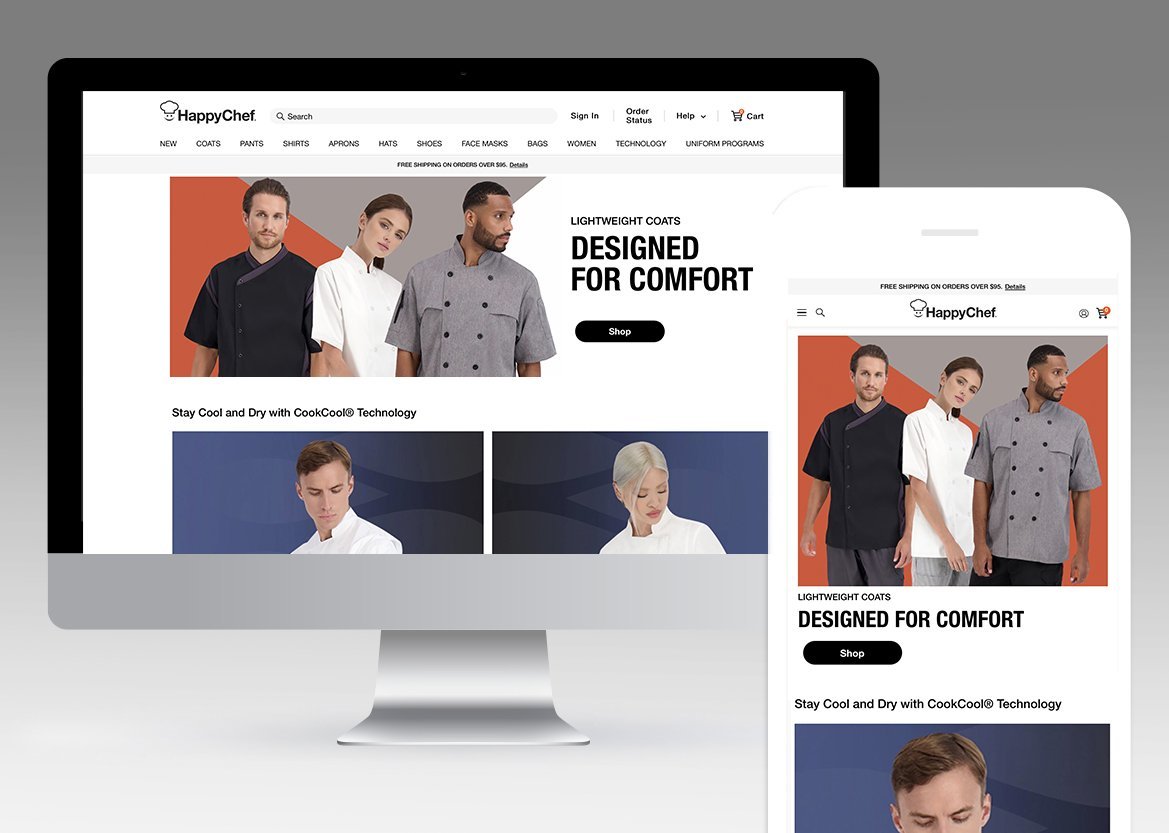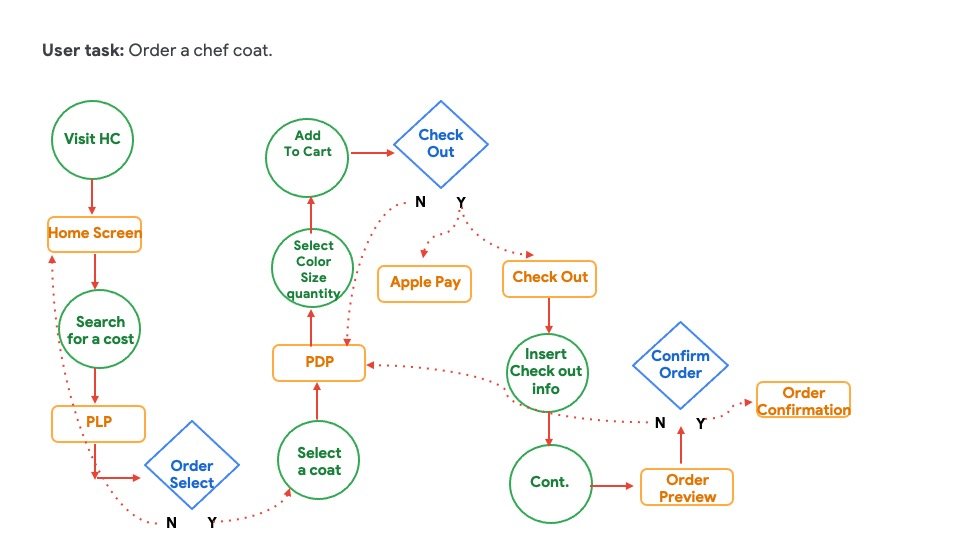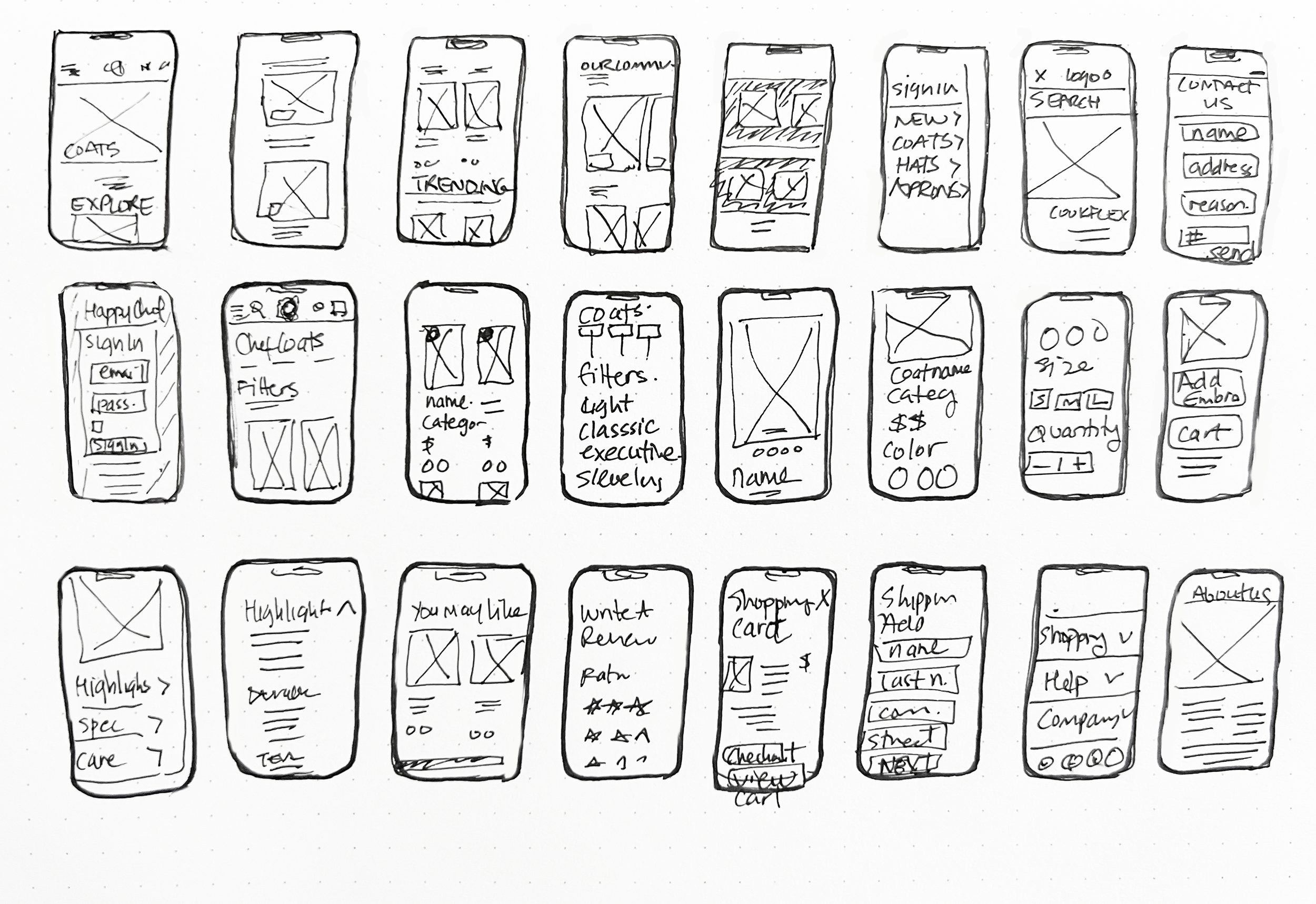UX - UI Design Case Study
Happy Chef
Empowering every culinary professional to unlock their full potential.
Happy Chef undertook a brand refresh, emphasizing their beliefs, purpose, and mission. In a market where other prominent companies also offer kitchen uniforms, HC aimed to distinguish itself by aligning its new brand with core values. Their mission centered around empowering culinary professionals to reach their full potential. To stand out, HC prioritized excellence in product quality, service, competitive pricing, and a diverse product selection. This strategic approach aimed at setting Happy Chef apart in a competitive market.
Roles
I assumed the following roles designing this site:
Hands-on Creative Director
User Experience (UX) Designer
User Interface (UI) Designer
Challenges
The chef apparel market is saturated with numerous small companies, each claiming to offer quality and affordable products. Customers are facing difficulties in finding a brand they can genuinely trust and build a lasting relationship with. The challenges of establishing and maintaining a robust online presence, along with navigating the complexities of an e-commerce business plan, make it challenging for brands to dominate in the industry.
Solutions
Happy Chef can differentiate itself through innovative designs and sustainable practices, effectively communicated to customers.
Building trust is crucial, achieved by showcasing positive customer reviews, transparent product benefits, detailed photography, and descriptions. Customization options and designs for women add to customer satisfaction.
A strong online presence, driven by digital marketing, responsive customer service, and collaborations with influencers, enhances brand visibility and credibility.
Quality assurance measures, adaptability to trends, and consideration of international market nuances further position the brand as a leader in the chef apparel industry










